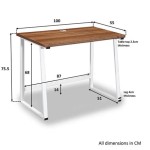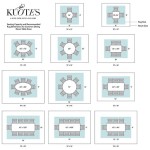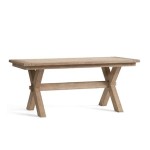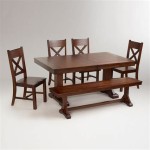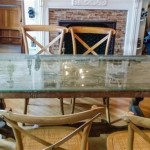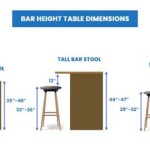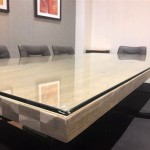What Is The Size of a Professional Pool Table Pocket Squares?
The dimensions of a pool table, including its pocket squares, are rigorously defined by governing bodies to ensure fair play and standardized competition at the professional level. While variations exist for recreational tables, professional pool tables adhere to specific size and tolerance requirements. The pocket size, specifically the pocket opening or "mouth" size, is a critical factor influencing gameplay and the difficulty of the game. This article will delve into the precise measurements of professional pool table pocket squares, the rationale behind these dimensions, and the considerations involved in maintaining these standards.
The primary organization dictating regulations for professional pool is the World Pool-Billiard Association (WPA). The WPA establishes the official rules and equipment specifications for various pool games, including 8-ball, 9-ball, and 10-ball. These specifications are designed to promote consistent play across different tournaments and locations. Adherence to these standards is crucial for any event aspiring to be recognized as a professional competition.
Understanding Pocket Dimensions: Key Measurements
The pocket dimensions on a professional pool table are not uniform; they differ between the corner pockets and the side pockets (also referred to as middle pockets). The corner pockets are typically smaller than the side pockets, adding a layer of challenge to shots directed towards the corners. There are multiple key measurements that comprise the overall "size" of a pocket, more than just a simple width dimension.
Pocket Opening (Mouth): This is the widest point of the pocket opening, measured from rail nose to rail nose. The WPA mandates specific ranges for both corner and side pockets. For corner pockets, the opening should be between 4 1/2 inches (4.5") and 4 5/8 inches (4.625"). Side pockets, being larger, should measure between 5 inches (5.0") and 5 1/8 inches (5.125"). These ranges provide a degree of acceptable variation while maintaining a general standard. It is important to note that these are *maximum* measurements.
Shelf Depth: The shelf is the distance from the nose of the cushion to the back of the pocket where the ball starts to drop. This depth is crucial for ensuring that balls reliably fall into the pocket without bouncing back onto the table. Shelf depth is less strictly controlled by WPA rules, but generally falls within a range that complements the pocket openings. Too shallow and balls can bounce out; too deep and it can affect the roll of the ball near the cushion.
Angle of Approach: The angle at which the rail cushions converge into the pocket also plays a significant role. A sharper angle can make it more difficult to pocket balls accurately, while a shallower angle might make the pockets too forgiving. WPA rules implicitly influence this angle through the specification of the pocket opening and cushion facing. The cushion facing is the angle the cushion presents to an incoming ball. Professional tables aim for a consistent cushion facing to ensure predictable rebound behavior.
Cushion Profile: The shape and material of the pocket cushions (also known as rails) contribute to how balls are deflected and pocketed. Professional pool tables typically use high-quality rubber cushions that offer consistent rebound properties. The precise profile of the cushion, whether it is a pointed or rounded shape, affects the trajectory of the ball after contact. The WPA doesn't specify the exact durometer of the rubber, but specifies that it be of consistently resilient material and profile.
Drop Point: The point at which the ball actually falls into the net or collection system beneath the table. This point is related to the shelf depth, but also takes into consideration any downward slope immediately behind the pocket opening. The goal is for a clean drop without any obstruction or interference with the ball's trajectory. In some older designs, the pocket drop could interfere with the ball, causing it to jump or spin back onto the table.
The Rationale Behind Specific Pocket Dimensions
The WPA pocket size specifications are not arbitrary. They are the result of years of experience and analysis aimed at creating a challenging yet fair playing field. Several factors influence the choice of these dimensions.
Balance of Skill and Luck: The pocket sizes are designed to require a high degree of accuracy and cue ball control. Pockets that are too large would diminish the importance of skill, allowing less precise shots to be successful. Conversely, pockets that are too small would make the game overly difficult, increasing the role of luck and diminishing the potential for skillful shot-making. The current pocket sizes represent a careful balance between these two extremes.
Game Difficulty: The pocket size directly correlates with the overall difficulty of the game. Smaller pockets necessitate more precise aiming, better cue ball control, and a greater understanding of ball physics. This elevated difficulty level is a defining characteristic of professional pool, separating it from recreational play.
Consistency Across Tables: Standardized pocket dimensions ensure that players can expect a consistent playing experience regardless of the location or tournament. This consistency is crucial for fair competition, as it eliminates the advantage of playing on a table with unusually large or forgiving pockets. It allows players to develop and refine their skills without having to constantly adjust to varying table conditions.
Historical Evolution: The evolution of pocket sizes reflects the ongoing refinement of the game. Over time, governing bodies have adjusted pocket dimensions based on feedback from professional players and observations of gameplay. These adjustments are intended to improve the overall quality and competitiveness of the sport. Early tables featured larger pockets, but as billiards became more refined, the pocket sizes decreased to emphasize more precision and skill.
Promotion of Strategic Play: Smaller pockets encourage more strategic play. Players must carefully consider their shot options, taking into account the angles, distances, and potential for leaving their opponent an easy shot. This strategic element adds another layer of complexity and skill to the game. Open tables with larger pockets can devolve into less strategic, more fast-paced shot-making, whereas smaller pockets require more planning and finesse.
Maintaining Pocket Standards
Achieving and maintaining the standardized pocket dimensions is an ongoing process. Several factors can affect pocket size and shape over time, requiring regular maintenance and inspection.
Cushion Wear and Tear: Constant use and impact from billiard balls can cause the pocket cushions to wear down over time. This wear can alter the pocket opening and angle of approach, affecting the table's playability. Regular inspection and replacement of worn cushions are essential for maintaining pocket standards.
Cloth Stretching and Degradation: The cloth covering the pool table, including the pocket facings, can stretch or degrade over time, impacting the pocket opening. Re-stretching or replacing the cloth can help restore the original pocket dimensions. The cloth must be taut and properly secured to the rails to maintain accurate play.
Rail Alignment: Proper rail alignment is crucial for ensuring consistent pocket dimensions. If the rails are misaligned, the pocket openings will be uneven, affecting the accuracy of shots. Regular adjustments to the rail alignment may be necessary to maintain optimal playing conditions. The rails must be securely fastened to the slate bed of the table to prevent movement.
Slate Bed Stability: The slate bed of the pool table provides a stable and level playing surface. Any movement or warping of the slate can affect the overall table geometry, including the pocket dimensions. Ensuring the slate bed is properly supported and leveled is essential for maintaining consistent pocket sizes.
Professional Measurement and Adjustment: Ideally, a qualified billiards technician should periodically inspect and measure the pocket dimensions to ensure they are within the WPA specifications. Specialized tools and techniques are used to accurately measure the pocket openings, shelf depth, and cushion angles. Minor adjustments may be necessary to bring the pockets back into compliance with the regulations.
In summation, the size of professional pool table pocket squares, as defined by the WPA, is a critical element of the game. The specific dimensions are designed to balance skill and luck, maintain consistency across tables, and promote strategic play. Maintaining these standards requires regular inspection, maintenance, and professional adjustment to ensure a fair and challenging playing experience for all competitors. The careful considerations behind pocket sizes reflect the evolution and refinement of pool as a professional sport, requiring diligence in upholding its precise regulations.

American Pool V Home

Pool Table Room Size Calculator

Dynamic Iii American Pool Table Brown Finish Tables

Size Does Matter Your Guide To Pool Tables Pooldawg Academy

Professional Pool Table

Pool Table Room Size Guide Home

Sudzendf 3 In 1 Green Portable Pool Table With Billiard Balls Brush Triangle Rack Ln20243608 The Home Depot

American Heritage Billiards Pool Tables Game Accessories

Dynamic Iii American Pool Table Brown Finish Tables

8ft Pool Table

